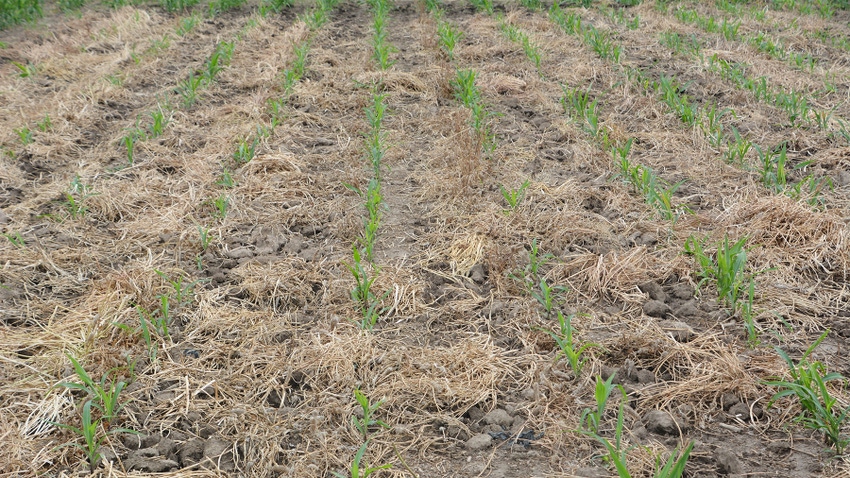
The benefits that cereal rye offers compared to other species make it a popular cover crop. It can reduce nitrogen leaving the field through tile lines by 46% to 48%. And it increases carbon in the soil. Yet some growers are reluctant to use cereal rye ahead of corn.
Shalamar Armstrong, head of the Soil Ecosystem and Nutrient Dynamics Lab at Purdue, understands their hesitation. “We compiled data from trials across the Midwest showing a 7% average reduction in corn yield following cereal rye versus no cover crop,” he says.
The primary issue is tie-up of nitrogen as cereal rye decomposes. Armstrong determined that cereal rye only gives about 10% of its N back for the current corn crop. By maturity, corn following cereal rye needs enough additional N that it creates a 40- to 60-pound-per-acre nitrogen challenge to overcome, he explains.
“Applying more nitrogen, particularly as starter at planting, offsets some of the gap,” Armstrong says. “However, applying more N may not always be prudent if you’re worried about water quality.”
Alternative species
“Another option is shifting to legume cover crops ahead of corn,” Armstrong says. “We’ve seen some success over the past three seasons, especially at our southern test site.”
Armstrong’s team first saw promise for balansa clover ahead of corn in trials in Champaign County in central Illinois. When they moved south to the Southern Indiana Purdue Ag Center near Butlerville, the advantage for balansa clover was more striking. Armstrong attributes this to warmer temperatures, especially in April, when clover growth excelled.
In these trials at both locations, Armstrong looked at precision cover crop seeding. Cover crops are seeded in precise rows, with a gap left for the corn row next spring. This method cuts seeding rates in half and already has been adopted on some farms in southern Illinois.
“We didn’t see any difference in total biomass produced in precision versus conventional seeding,” he says. “For balansa clover, the carbon-to-nitrogen ratio is about 10-to-1 versus near 20-to-1 for cereal rye. That’s why nitrogen is released quicker after termination in clover.”
Here’s the bottom line: Based on results at SEPAC, perhaps growers could cut N rates 50 pounds per acre following legumes and obtain the same yield. If seeding balansa clover costs $10 per acre and nitrogen is near $1 per pound, that’s a payback of $30 per acre. It may also improve carbon intensity score, which could soon become a key issue, Armstrong adds.
Northern county adjustments
If you live in northern counties, how can you capture these advantages? Armstrong offers suggestions:
Plant an earlier soybean variety. Part of the challenge is seeding clover earlier, giving it better odds for surviving winter.
Seed after wheat. If you grow wheat, establish balansa clover behind it.
Seed into standing corn. Once corn reaches R6, consider seeding clover into standing corn.
Choose hardier clovers. Follow breeding developments that might turn out clovers that tolerate cold better.
Adjust termination timing. Allow clover to grow longer, although the trade-off could be delayed corn planting. And in dry years like 2023, it may be necessary to terminate covers sooner to prevent moisture loss.
About the Author(s)
You May Also Like




